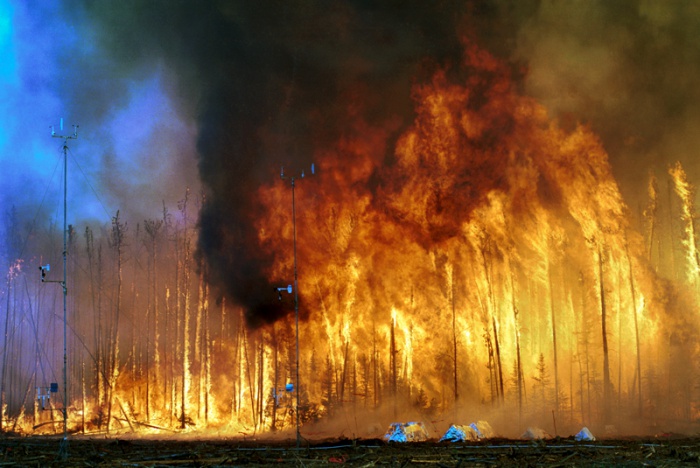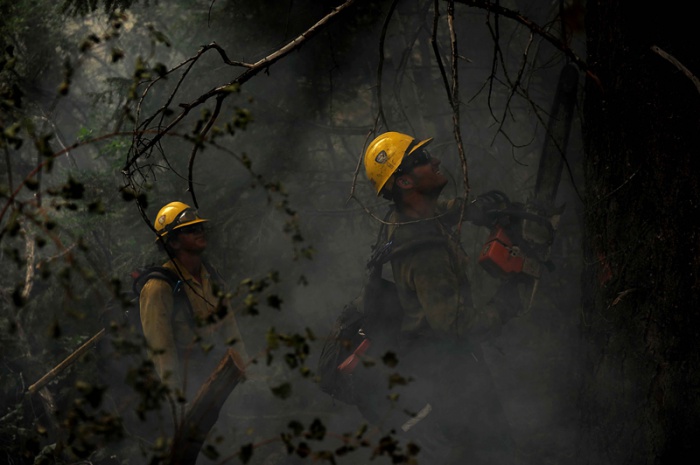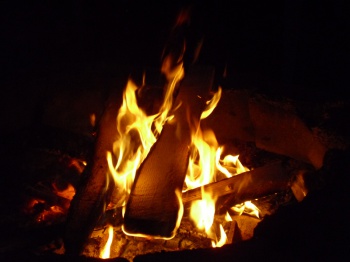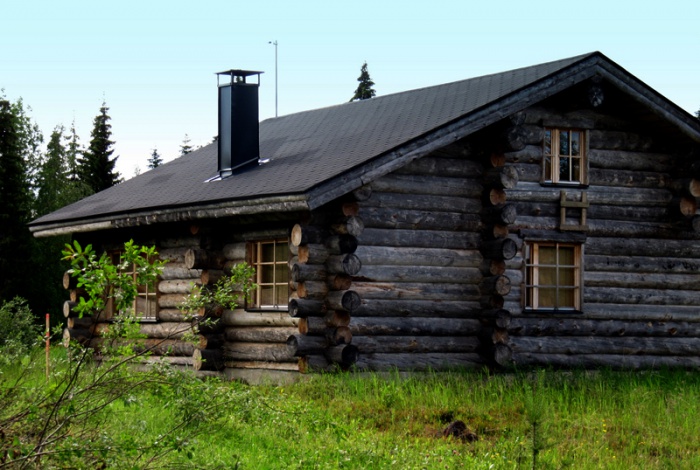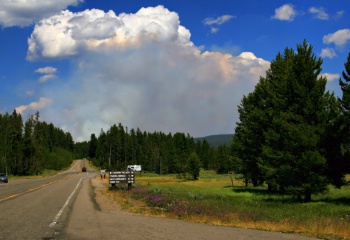 Fire Experiment by Wikimedia Commons
Fire Experiment by Wikimedia Commons
This year forest fires have been a part of the evening news more often than usual. The number of fires that occurred by June 20th was 941. This is almost double the number from the previous year, with 591. According to the Government of British Columbia, on September 13th, the total number was 1,435 fires — almost as many as in all of 2010 (with 1,673). Even now (September 17th), there are over 50 active fires in the province of British Columbia. Although none of them resembled even from a distance the Porcupine Fire of 1911 that burned approximately 200,000 hectares, this topic still deserves our attention.
The Role of Fire
Fire is a part of nature and in principle it isn’t good or bad. In British Columbia, forest fires are natural. They have several functions. They clear forests and some ecosystems. Boreal forests are especially are dependent on fires. Fire thus plays a significant and often helpful role in nature. As the Food and Agriculture Organization of the United Nations says in its report, it is a necessary evil — at least as long as it doesn’t pose a threat to humans. And unfortunately, this is quite often not the case. We can lead theoretical discussions about the benefits and risks, but once a human life is in danger, immediate action is needed.
Institutional Regulation
 Wildfire fighters by Wikimedia Commons
Wildfire fighters by Wikimedia Commons
Government regulation concerning forest fires in Canada has its origins in 1849. In 1875, British Columbia enacted the Bush Fire Act. The modern fire control system was born in 1917 when the Forest Fires Prevention Act was introduced. Aerial water-bombing was started as soon as 1944. Today, The Canadian Forest Fire Danger Rating System, regular patrols, and many other measures protect people and property from the threat of fires. The system relies heavily on modern communication systems and uses all available technology. Today, the main regulation in British Columbia is the _Wildfire Act and Regulation– that came into power in 1995. But even the most precise system cannot cover every risk and every area. Unfortunately, they can’t control weather or humidity. Moreover, often the fire is caused by careless tourists and enhanced by irresponsible residents. So what can we do?
Well, aside from joining volunteer firefighters there are other and easier things:
Minimize Risk of Fires in Your Surroundings
Most people think that wildfires will never affect them (and if they spend all their time in the centre of Vancouver, they’re probably right). With an increasing number of people living or just spending their holidays in forest regions, the risk is increasing. Flames destroy many houses and lives each year, but you can decrease these risks by following some tried and true steps.
1. Mow your lawn
Every fire needs fuel to burn. Some people unknowingly provide it through a wrong choice of vegetation around their house. You don’t have to have an English lawn all around your cabin. On the other hand, having your house in the middle of a forest and metre-high grass won’t help you much in case of fire. The title isn’t meant literally; you just should think for a while if your garden protects you or endangers you. Oregon State University in cooperation with Washington State University and the University of Idaho published a report called “FIRE-RESISTANT PLANTS FOR HOME LANDSCAPES“. It’s a very useful manual for homeowners, not just in terms of selection of vegetation but also in terms of garden design. Obviously, choosing the right vegetation will not make your cabin fireproof. On the other hand, it can significantly decrease the risk and in the worst-case scenario provide you with enough time for escape. Keep the grass for the first 30 feet near the building cut short and well watered. Trees in this area should be well spaced and, if possible, restricted to deciduous trees (see the picture in the report). Search for potential risk elements such as wooden walkways, fences, or weedy gardens reaching from the woods to your buildings. You should break these up with the help of patios or a green lawn. Keep flammables (lumber or firewood piles) outside this area.
2. Do not burn your waste
Careless burning of waste, even though there are many other ways to dispose it, causes a considerable number of fires each year. Here you can use the Three Rs motto: Reduce, Reuse, and Recycle. Paper, cardboard, plastic, and metal should be brought to the nearest recycling centre. Despite the fact that burning them is illegal in some areas, people still do it. Food leftovers can be easily turned into compost. It’s possible to find a use for almost every piece of trash.
3. If making a fire is necessary, follow the rules
 Camp fire by Jon Ross
Camp fire by Jon Ross
Despite the second rule, in some cases, there simply won’t be any other choice than to start a fire. In this case, you should strictly follow these rules.
Firstly, don’t start a fire in restricted areas. Secondly, if possible, use a designated fire pit. Thirdly, it there isn’t any pit, clear a circle area of at least five feet to the bare ground and locate the fire in the middle. Moreover, always have water and a shovel nearby. Finally, never leave the fire unattended and after you end your activity, make sure that you douse the fire properly. If you use burn barrels, make sure that they are approved by the local fire agency. According to the Ministry of Natural Resources, you shouldn’t even start a fire if the wind exceeds 10 miles per hour.
Since you would be liable for any costs caused by fire that gets away from your control, it’s reasonable to take all precautions.
4. If you’re building house or cabin in a forest, think about fire before you begin
The best way you can protect your forest cabin from fire is to use the right materials and to design your structure accordingly. You should locate all buildings in natural openings as far away from the trees and tall grasses as possible. Situate your buildings on level ground not near the edge of steep hills where it’s possible for fire to run uphill with great speed. While making a clearing for the driveway and cabin, take this opportunity to create defensible space. Remove evergreens within around 30 feet of your building and space trees so there will be at least 10 feet between the branches. The driveway should be wide enough for emergency vehicles, (that means at least 12 feet wide with a 14-foot overhead clearance). All these precautions are relatively easy to take in the beginning but very hard once buildings are already built. A defensible space is a basic precondition to home survival in a wildfire. Plants should be relatively short with wide spaces among them. Planting around decks and windows might not be the best idea. You should also keep all plants around the foundation clean of dead vegetation (see point 1). Think about fire risk next time you leave two metres of firewood next to your cabin.
 Log cabin by Heather Sunderland
Log cabin by Heather Sunderland
When building your forest cabin, you can use wide an array of fire-resistant construction materials. Starting from the roof, try to use Class A rated fiberglass shingles, metal, or tile. Eaves and soffits should be closed with metal or other fire-resistant material. Instead of traditional wood, use brick, stucco, metal, or other fire-resistant siding. Use building designs without alcoves, valleys, and other spaces where leaves can collect. Rock or patio blocks should be placed around the foundation and beneath decks and overhangs. Fire alarms and fire extinguishers are also a must.
If There Is a Fire Nearby
Trying to order insurance through the Internet after you spot the flames is too late. This should be done in advance. Just be careful while reading the small print at the end of your contract and pick a policy that covers not just the building but furniture and other items as well.
Be prepared for immediate evacuation in case of fire. Therefore you should know where your documents, passports, jewellery, laptop, medication, and other essentials are at all times. This doesn’t mean that you should have them all in two carton boxes next to the door. You just need to be able to pack your valuables very fast. It might be a good idea to have your old photos scanned and stored online using one of many cloud-computing services. Insurance will cover everything else.
 Smoke cloud by Wikimedia Commons
Smoke cloud by Wikimedia Commons
When considering whether it’s the right time to leave, consider the exit routes you have. If you are in the middle of the woods and all roads are narrow, it might be better to leave earlier. Then you should put a note on the front door saying that you left (and also the names of all people in the group). If you’re using gas for cooking or heating, you should turn it off. Hopefully, forest fires and evacuation will never happen to you, but as the saying goes: better safe than sorry.
Do you have any other tips? Please share them in discussion bellow.
